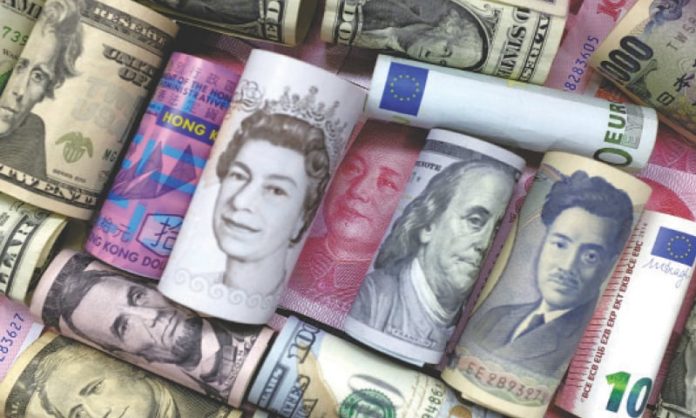FROM the dominant reserve currency for central banks to the main conduit for global trade and borrowing, US dollars are the lifeblood for banks and markets around the world.
A Fed research paper estimated in 2017 that as much as 70 per cent of all dollars are held outside the United States and 60pc of all $100 bills circulated overseas.
Another Fed paper this year said roughly half the 1.6 trillion of dollar banknotes in circulation were outside the United States.
Markets got a reminder of the greenback’s hegemony in September when a squeeze in overnight dollar funding rates in New York sent shivers across the world.
Governments and central banks have tried to reduce their dollar-dependency, with Bank of England governor Mark Carney describing its role in the world economy as “destabilising”. But de-dollarisation is likely to take many years.
Here are some ways the dollar is used:
Central bank reserve holdings
• Reserves of different currencies are held by central banks to settle international claims, intervene in foreign exchange markets or as rainy-day funds.
• Total reserves in US dollars were $6.79 trillion in the second quarter of 2019 more than 60pc of the total, International Monetary Fund data shows.
• As some countries, such as Russia, reduce their proportion of dollars, the greenback’s share was the lowest since 2013, the IMF data showed.
• The euro is the second most-popular reserve currency, accounting for 20pc of global holdings.
• Since 2010, the Japanese yen’s role as a reserve currency has declined to 5.4pc while the Chinese yuan has become more prominent, although represents just 2pc.
International payments
• The dollar is dominant for transactions between non-US exporters and importers.
• The proportion of invoices denominated in dollars is nearly five times the dollar’s share of world imports, data from the Bank for International Settlements (BIS), an umbrella group of the world’s central banks, shows.
• In 2018, more than half of all goods imported into the EU from non-members were invoiced in US dollars, compared to just a third in euros, Eurostat data shows.
• Companies operating in global markets, such as the airplane-maker Airbus, often list their prices in dollars. Former European Commission President Jean-Claude Juncker said it was “ridiculous that European companies buy European planes in dollars instead of the euro”.
• The BIS found 80pc of financing of trade between banks is in dollars.
Commodity pricing
• Commodities such as oil and gold are typically denominated in US dollars, as are benchmark futures such as Brent.
• Gulf oil producers peg their currencies to the dollar to avoid risk from fluctuations when invoicing their sales.
• The dollar’s supremacy was highlighted in 2018 when Washington decided to re-impose sanctions on Iran and all those doing business with it — any country breaking sanctions risked having access to dollars cut off.
• China has launched yuan crude futures which could eventually become a global price benchmark alongside Brent and WTI. But a pre-requisite would be liberalising China’s capital account to allow free movement of money.
Investments and borrowing
• US dollar lending to non-bank borrowers outside the US stood at $11.9 trillion at the end of June 2019, more than doubling over the past decade, BIS data shows.
• Foreign currency borrowing is particularly common in emerging markets which now have a record $3.74 trillion in dollar debt, the BIS said.
• But emerging markets’ dollar borrowing rates slowed to 2pc versus recent 8pc peaks.
• It is considered more risky, and is therefore expensive, for non-US banks to borrow in dollars, because they are likely to have fewer dollar deposits relative to their dollar debt.






























